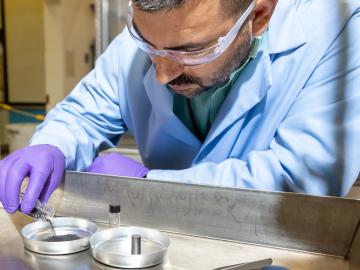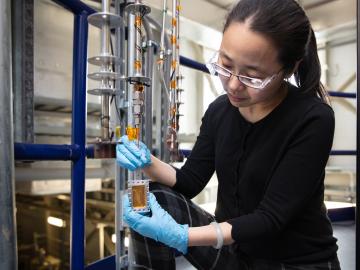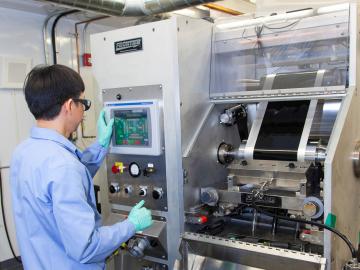
Filter News
Area of Research
News Topics
- (-) Advanced Reactors (5)
- (-) Cybersecurity (2)
- (-) Environment (16)
- (-) Exascale Computing (3)
- (-) Isotopes (3)
- (-) Mercury (2)
- (-) Space Exploration (2)
- 3-D Printing/Advanced Manufacturing (16)
- Artificial Intelligence (9)
- Big Data (8)
- Bioenergy (11)
- Biology (2)
- Biomedical (13)
- Biotechnology (2)
- Chemical Sciences (2)
- Clean Water (4)
- Computer Science (30)
- Coronavirus (13)
- Energy Storage (10)
- Fusion (9)
- Grid (4)
- High-Performance Computing (1)
- Machine Learning (3)
- Materials Science (12)
- Mathematics (2)
- Microscopy (3)
- Nanotechnology (4)
- Neutron Science (21)
- Nuclear Energy (22)
- Physics (9)
- Polymers (1)
- Quantum Science (8)
- Security (2)
- Summit (11)
- Transportation (8)
Media Contacts

Ask Tyler Gerczak to find a negative in working at the Department of Energy’s Oak Ridge National Laboratory, and his only complaint is the summer weather. It is not as forgiving as the summers in Pulaski, Wisconsin, his hometown.

Sometimes solutions to the biggest problems can be found in the smallest details. The work of biochemist Alex Johs at Oak Ridge National Laboratory bears this out, as he focuses on understanding protein structures and molecular interactions to resolve complex global problems like the spread of mercury pollution in waterways and the food supply.

Researchers at the Department of Energy’s Oak Ridge National Laboratory, Pacific Northwest National Laboratory and Washington State University teamed up to investigate the complex dynamics of low-water liquids that challenge nuclear waste processing at federal cleanup sites.

The use of lithium-ion batteries has surged in recent years, starting with electronics and expanding into many applications, including the growing electric and hybrid vehicle industry. But the technologies to optimize recycling of these batteries have not kept pace.
Scientists at the Department of Energy’s Oak Ridge National Laboratory (ORNL) have developed a process that could remove CO2 from coal-burning power plant emissions in a way that is similar to how soda lime works in scuba diving rebreathers. Their research, published January 31 in...


